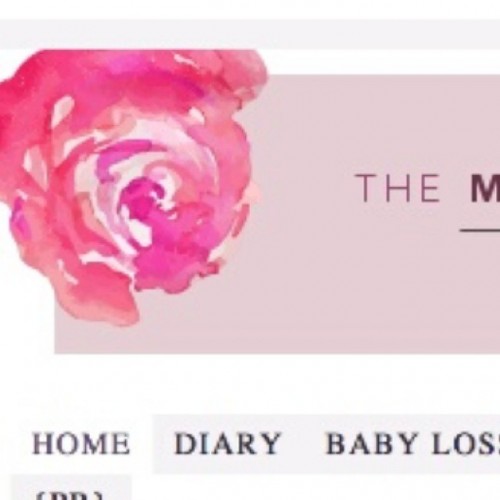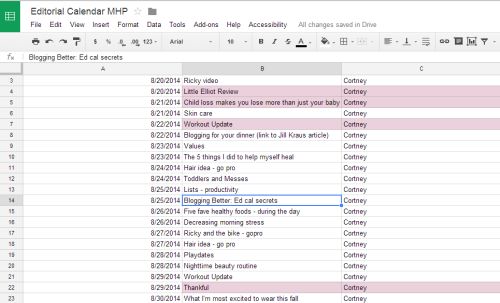Once my blog started getting some notoriety, I begin learning all the little ways that it could be improved – both from a visual perspective and to simply bring in more traffic. As my audience grew, I really became aware of how the trends within my blogging niche seemed to to frequently change – and learned that to stay ahead of the curve, I was going to have to focus on continuously improving how I blog and the structure of my site.
One day I realized that owning a successful blog means constantly evolving my writing mindset and tweaking how I manage my site in order to keep up with how quickly the internet changes. That what my blog looks like today – and the way that I run it – are things that can’t stay stagnant if I want to keep growing my audience.
So what am I doing right now to keep up with changes in the blogging world? Read on to find out.
1. Updating the Visuals
One thing that I do fairly regularly is update the visual look and feel of my site. I make minor changes every month or so, with at least one major visual change each year. Right now, I’m undergoing a huge revamp with my graphic designer. We’re creating an entirely new look in terms of the color palette and images that are incorporated into the design of the site. Basically, the trend within my blogging niche is leaning towards a much more refined visual – from the colors and fonts to how photos are used. This is a big change from what my blog currently looks like, but it’s necessary for me to stay relevant with my audience.
I do recommend working with a designer for the main images on your blog – you’ll end up with a much nicer design. If you’re tight on funds, you can look at local design schools to find someone who is working towards or just received their degree – they’ll usually be less expensive than a freelance designer who has years of experience under their belt. Working with a real designer will make the end result of your site design more polished – meaning you’ll look more professional to and have more credibility with your audience.
2. Posting More Frequently
I made a commitment at the beginning of the year to become a more frequent blogger. I was hoping to get myself up to 14 posts a week, with the expectation that I could boost that to 21 posts per week in 2015. The thought process behind this is that the more content pushed out, the more there is for people to read. It seems like a no brainer for building a bigger audience, right?
We’re over halfway through the year and slowly but surely, I’m still working on this step – I’m up to about 10 consistent posts a week and have turned my focus to publishing 14 articles per week by the end of September. This is one of the hardest goals I’m aiming towards right now – mostly because it requires the a lot of day-to-day work. It’s certainly time consuming, but I know that ultimately, all of this hard work will pay off.
3. Using Guest Posters
In my quest to post more frequently, I’ve also pushed myself to take on some regular contributors and guest posters. Because I have a pretty large social following and blog readership (as well as friends who are bloggers themselves), it’s been fairly easy to take on the regular bloggers. From the perspective of finding great guest bloggers, I use social media hashtags to recruit bloggers for particular topics. I also reach out to individuals that I follow on social media who I know could create a valuable, relevant article for my readership.
To warn you, taking on guest posters isn’t easier than actually writing a post yourself. All of the content needs to be edited well, as the post is still going on your website – which represents your personal brand. You’ll likely have to find images to use and add links where appropriate, because guest posters probably won’t be overly familiar with the nuances of your blogging style. But with that being said, it’s a great way to bring in a different perspective to your site, build content outside of your own and increase your social media audience – as guest bloggers generally share the work published on your site with their own audience.
4. Being Diligent About an Editorial Calendar
One thing that I realized this summer is how disorganized I am when it comes to posting on my site. Keeping track of new ideas, what guest posts I have coming up, what I’ve recently posted…it was all just one big mess in the back of my mind. As my site’s grown (and as several pregnancies have destroyed my short-term memory), it’s gotten to the point where I can’t manage everything from my head. An editorial calendar has become so necessary to keep my blog on track.
I really just use a spreadsheet in Google Docs. It’s ideal, because it’s as easy to use as any Microsoft Office product. The best thing about this system is that it travels with me – I can access it from any computer, tablet or smartphone. Because of this, I don’t have to worry about saving the most updated version of my calendar across all of my devices. It’s also really helping me to avoid writer’s block – since I am now “writing down” all of my ideas, there’s always a writing prompt available to keep me on track. Which, hopefully, will help me get to the 14 posts a week that I mentioned above.
5. Maximizing Social Media
For a long time, I thought I was maximizing my power on social media to drive traffic to my site. But with how these networks have evolved – and how many people and brands are posting updates all the time – I realized that I’m just not hitting enough of my target demographic with two measly posts on the most popular networks. And I certainly haven’t been harnessing my content on the up and coming networks. To combat this, I’ve developed a totally new social media strategy that seems to be boosting my numbers already:
- I manually post twice to Twitter, Facebook and Google+
- I use Hootsuite to schedule out several additional tweets over the course of 24 hours – which cross posts to my Facebook page
- I pin every image on my posts – and I’m trying to use more tags and keywords in the description of the pin
- I target each post to particular LinkedIn groups that are very niche focused (my blog is about parenting, so I focus on parenting specific groups)
- I create a LinkedIn status update for every post that’s not overly family focused (because these just don’t seem appropriate for LinkedIn) and will create an actual LinkedIn article that links back to my blog for anything about working from home or blogging better
- I use images with tags and long descriptions – including a note that there’s a full post on my blog – on Instagram (where the post is relevant to this highly visual network)
Bottom line: social media is incredibly important for pushing your work out to the public. Figuring out a strategy in terms of how to best maximize your own reach is a key for blogging success.
What This All Means for You
It can be a little overwhelming to look at a list like this and think that you suddenly have a million little things to change about your blog. But the great thing about blogging is that you don’t have to do everything at once – since you’re in charge of your blog, you can do things on your own time. By splitting up all of the changes you want to make into digestible chunks – like tackling one item each month – you can make this whole process quite a bit easier to manage.
Owning a successful blog is really all about evolution. Think about the blogs that you frequent and how you found them – they’re continuously changing with the blogging world as well. It’s certainly not easy to be constantly looking towards the next great thing in terms of blogging – especially if it means producing a lot more content each week or tripling the time you spend on social media. But if you want to be a professional blogger, you have to start thinking and implementing like the pros. So make a list and start tackling it – slowly but surely, this will all start to become second nature.
Cortney :)



